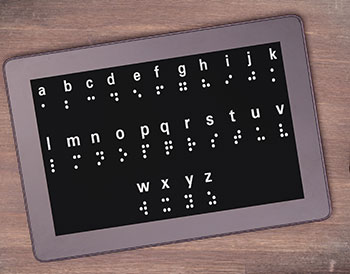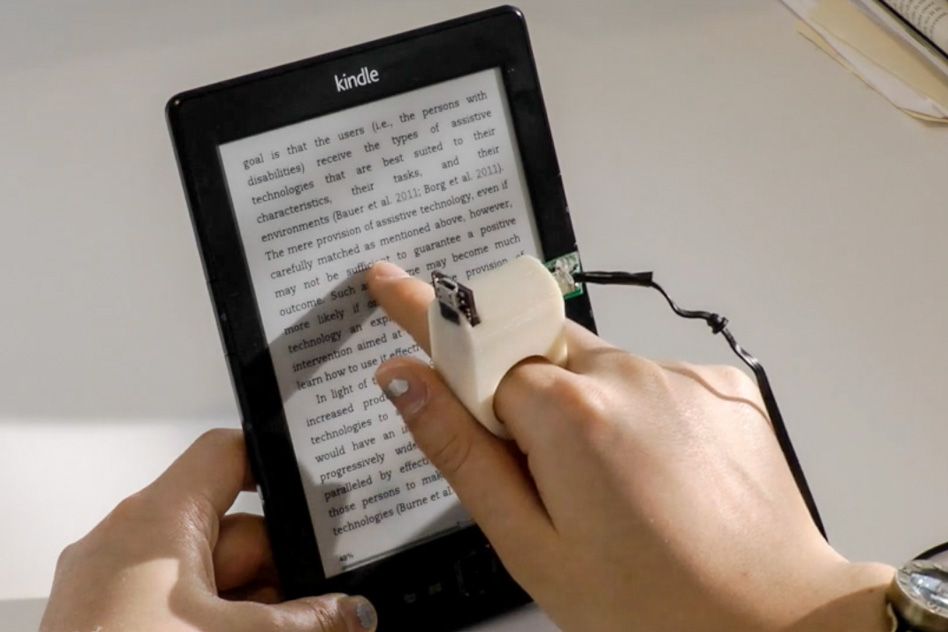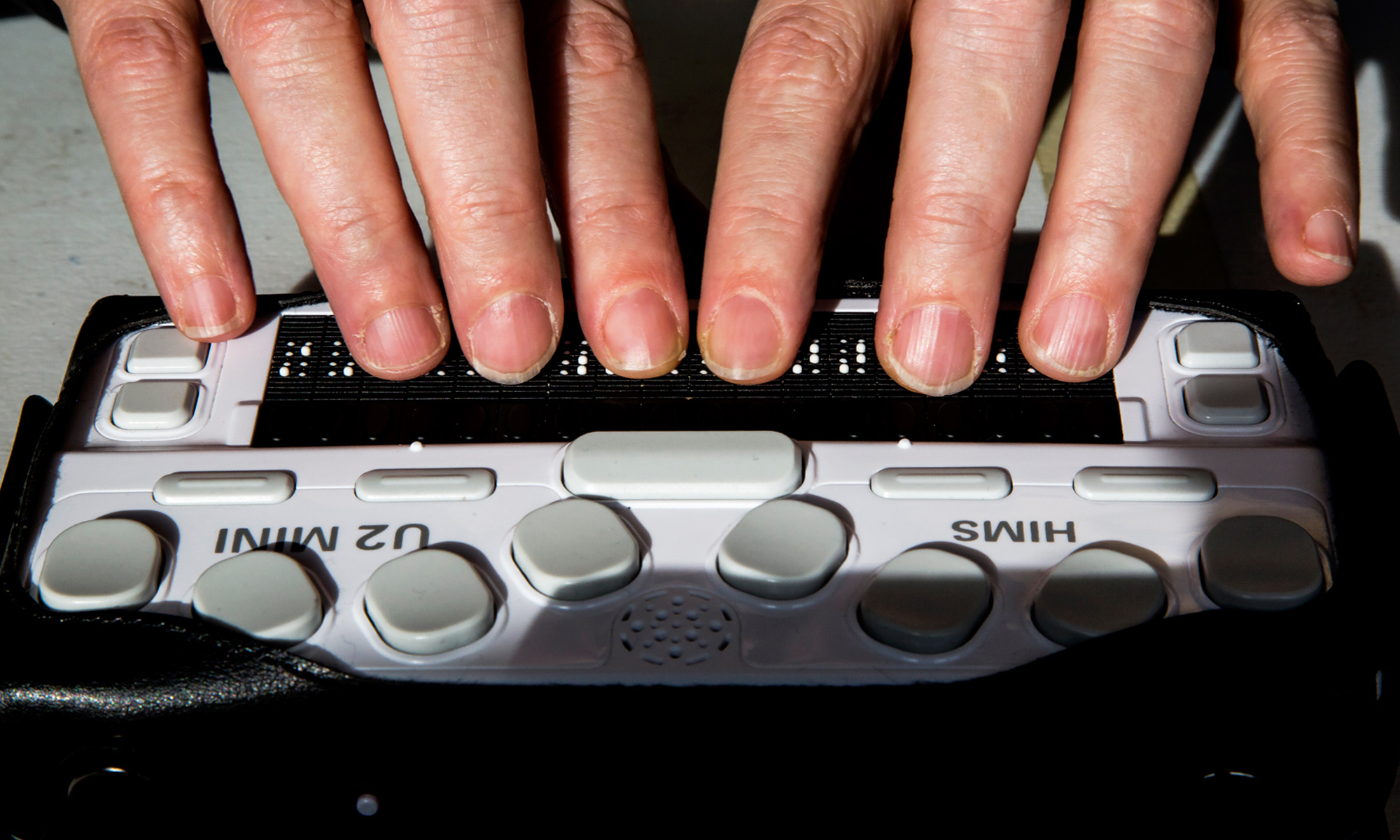Mobility Aids for Visually Impaired Users: Moving Through the World with Confidence
Mobility Aids for Visually Impaired Users: Moving Through the World with Confidence
Blog Article
Empowering Freedom With Assistive Modern Technology for the Blind
The assimilation of assistive technology right into the lives of individuals with visual impairments stands for a significant improvement in advertising self-reliance and self-sufficiency. From innovative screen readers to innovative clever canes, these tools not just boost everyday navigating and communication yet likewise encourage users to involve meaningfully in various aspects of life. As we explore the myriad advantages and real-world applications of these modern technologies, it becomes crucial to check out the underlying factors that add to their efficiency and the capacity for future developments in this vital field.
Introduction of Assistive Technology

The development of assistive technology is grounded in concepts of inclusivity and empowerment. Innovations in software application, equipment, and sensory improvements offer users with choices tailored to their certain requirements. From screen readers that transform message to speech, to responsive gadgets that convey info through touch, these devices change the way people involve with their surroundings.
Along with useful applications, assistive modern technology fosters greater social addition and involvement in different sectors, including education and learning and employment (Screen readers for the blind). As r & d remain to advance, the possibility for assistive modern technology to further enhance the lives of visually impaired individuals stays appealing, leading the way for a much more equitable culture where every person can grow
Kinds of Assistive Instruments
A variety of assistive gadgets have actually arised to sustain individuals with visual problems, each designed to meet specific needs and boost day-to-day functioning. These devices range from low-tech solutions to state-of-the-art developments, offering diverse options for customers.
Low-tech tools include magnifiers and large-print products that help in reading and writing. Braille tools, such as Braille stylus pens and slates, enable tactile reading and interaction. Alignment and mobility help, like white walking canes, aid individuals browse their setting safely.
On the greater end of the range, electronic magnifying systems and screen readers supply significant support. Digital magnifiers permit individuals to increase the size of text and photos on screens, while screen viewers convert electronic material into manufactured speech, promoting accessibility to info on computers and smartphones.
Smart device applications additionally play a critical function, offering attributes like text acknowledgment and navigation aid. Wearable innovation, such as wise glasses equipped with enhanced reality, is arising as a promising device to boost situational understanding.
Advantages of Assistive Technology
The assimilation of assistive technology considerably boosts the high quality of life for individuals with aesthetic impairments. These modern technologies equip customers by promoting self-reliance, enabling them to browse their settings better and do everyday jobs with better ease. For instance, display viewers and magnifying software enable people to access electronic info, fostering educational and specialist opportunities that may have formerly been out of reach.
In addition, assistive tools such as wise canes and general practitioners applications provide real-time navigation support, improving wheelchair and safety. This enhanced autonomy not only improves self-confidence yet also encourages social engagement, allowing users to participate more fully in their neighborhoods.
Assistive technology likewise helps with communication, helping customers get in touch with others with voice acknowledgment and text-to-speech applications. This ability is essential for preserving partnerships and accessing vital details.
Furthermore, the personalization alternatives available with lots of assistive technologies ensure that individuals can customize tools to their specific requirements, better enhancing use and efficiency. On the whole, the advantages of assistive innovation for people with aesthetic problems are extensive, promoting a much more comprehensive culture where everybody can seek their objectives and goals.
Study and Success Stories
Highlighting the transformative impact of assistive technology, countless situation researches show how people with aesthetic disabilities have actually efficiently incorporated these tools right into their day-to-day lives. One engaging instance involves an university student that made use of screen reading software to navigate academic materials and on the internet resources effectively. This innovation not just promoted her education and learning but likewise improved her confidence in taking part in conversations and team tasks.
Another study includes a professional that employs a mobile phone application made for navigating and object recognition. By utilizing this application, he has actually restored autonomy in both his personal and job environments, permitting him to commute separately and involve with colleagues a lot more effectively.
Furthermore, a retiree shared her experience with braille e-readers, which enabled her to access a vast variety of literature and stay attached with her area through book clubs.
These success tales underscore the important function of assistive technology in promoting freedom, enhancing high quality of life, and advertising social integration for individuals with visual problems (AI-powered visual aids). By welcoming these ingenious devices, users can get over obstacles and confiscate opportunities that contribute to their personal and expert satisfaction

Future Trends in Assistive Technology
Innovation in assistive technology is positioned to redefine the landscape of assistance for individuals with aesthetic impairments. Emerging trends stress the assimilation of fabricated intelligence (AI) and equipment understanding, which boost the capability of devices that aid with navigating and details ease of access. For example, AI-driven applications are currently with the ability of analyzing visual information in real-time, allowing customers to engage with their atmosphere more separately.
Moreover, the growth of wearable technology is progressing quickly. Smart glasses geared up with augmented fact (AR) can provide audio summaries of environments, changing just how customers interact with public spaces. These tools not only advertise freedom however additionally foster social inclusion.
In Addition, the Net of Points (IoT) is making homes smarter, permitting seamless connection in between assistive gadgets and daily home appliances. This connectivity try this site empowers customers by enabling voice-activated controls and automated responses tailored to private demands.
Conclusion
Finally, assistive innovation plays a critical function in encouraging individuals with aesthetic problems by improving their independence and engagement with their environments. The varied variety of look these up devices and applications available not just assists in navigating and interaction yet likewise advertises social combination and opportunities for expert and individual growth. As developments proceed in this area, the possibility for enhancing the lifestyle for those with aesthetic disabilities will increase, promoting higher autonomy and empowerment.

Report this page